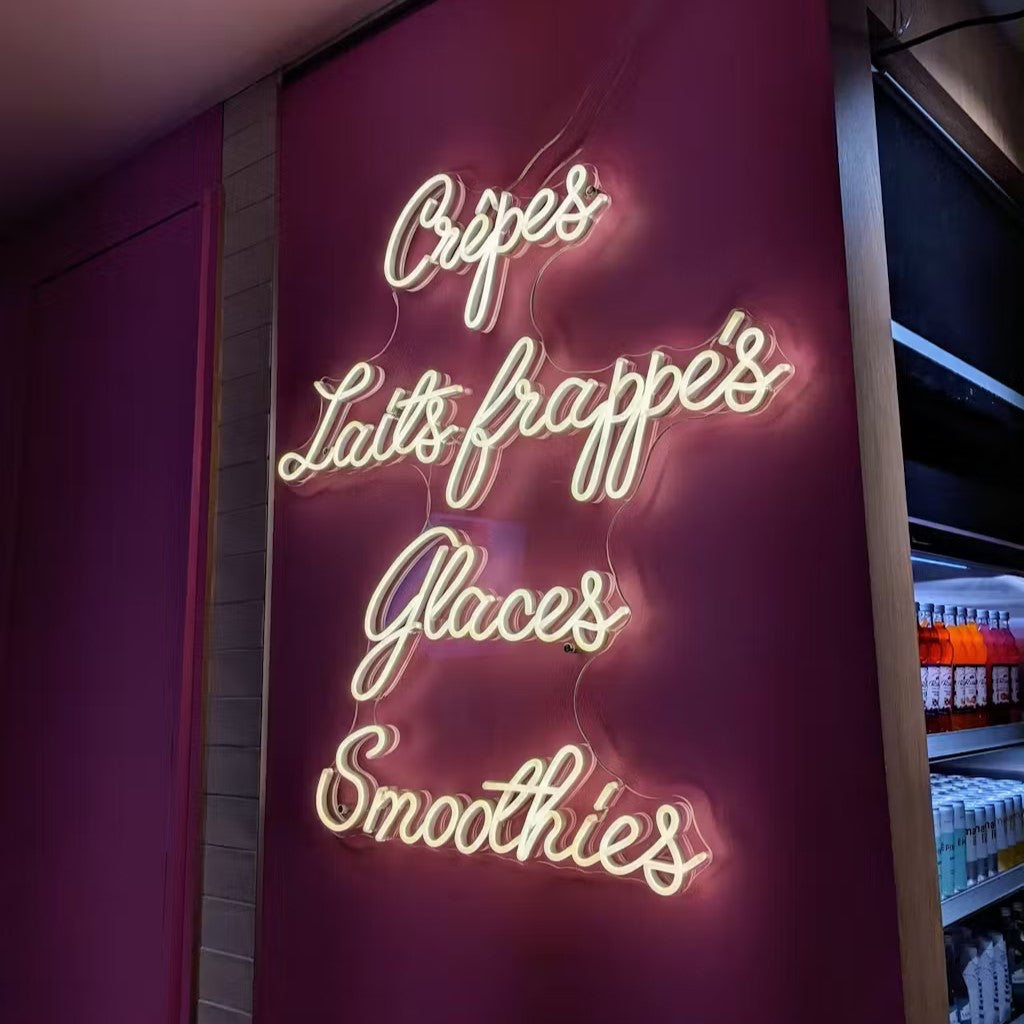Flex Neon vs. Glass Neon: What’s the Difference?
One of the most important tasks in starting a business is creating an attractive signage. Once you’ve selected your brand, a signage serves as the inanimate salesperson of your company to reinforce your brand.
Two of the most popular choices are Glass Neon and Flex Neon. Before choosing between the two, it pays to know how they differ from each other. Read on to help you decide which one is more suitable for your business.
11 Things to know about Flex Neon and Glass Neon
- Source of light
The classic glass neon utilizes neon gas fluorescents as a source of light. On the other hand, a flex neon signage has solid-state semiconductors that allow you to save on energy consumption. Flex Neon consumes 5 to 10 times less energy than the Glass Neon. It is also more eco-friendly.
- Input voltage
When comparing Flex Neon vs. Glass Neon in terms of input voltage, Flex Neon is considered to be safer. Flex Neon has an input voltage of 24V/120V. On the other hand, Glass Neon has 3KV to 18KV.
- Longevity of the tubes
Glass Neon used to be the gold standard in signage because of its long lifespan. Unfortunately, it is slowly becoming obsolete ever since the Flex Neon was introduced in the market. The average life expectancy of a Glass Neon tube is 10,000 hours. On the other hand, a Flex Neon tube is expected to last for at least 30,000 hours. This is 3 times the lifespan of a Glass Neon tube.
- Ease of installation
Flex Neon is much easier to install and create as compared to Glass Neon. Even an inexperienced technician can install them. If you’re planning to DIY, Flex Neon is more preferable. You can bend, cut, and shape them to just about any figure. If you choose Glass Neon, a master artisan who has adequate experience in production and installation is needed.
- Durability
Business owners avoid incurring expenses due to breakage and accidents as much as possible. Unfortunately, Glass Neon is very fragile. It is highly likely to break if you drop a Glass Neon signage. Flex Neon is more durable. It is flexible, flame retardant, and constructed using Polyvinyl chloride (PVC). It is unlikely to break even if you drop it.
- Impact on the environment
Glass Neon has always been associated with mercury contamination. The glass products are known to be impregnated with heated mercury. Glass Neon workers were said to suffer from heavy metal poisoning because of frequent exposure to the metal. Flex Neon doesn’t contain mercury or any other heavy metal. It is also more environment–friendly due to the fact that it consumes less energy in order to light up.
- Price
The price difference between Flex Neon vs. Glass Neon isn’t too big. Flex Neon signs tend to be slightly cheaper. The prices of the lights will vary based on the style and size of the signage that you choose.
- Maintenance
Flex Neon is pretty much maintenance-free. This makes its running cost much lower. On the other hand, Glass Neon tubes need to have the gas re-filled after a long period of time. The procedure for gas refilling requires a professional who charges a maintenance fee. A transformer is needed to hang the neon sign easily.
- Safety
Glass Neon always poses the risk of breakage. This might expose the people in the area to the heavy metal mercury. Flex Neon doesn’t contain dangerous materials like phosphor and mercury. Special treatments are not required for disposal. It can also be easily recycled. Flex Neon is also shockproof and emits very little heat. This makes it safer to use as compared to Glass Neon.
- Brightness
A Glass Neon sign is warmer. Flex Neon is brighter and can be seen from a longer distance.
- Accessibility
Glass Neon signs are quite flexible in terms of design. They can be produced in different colors. It is reliable and can function for as long as 24 hours a day to better help your company. Flex Neon is increasing in popularity since it utilizes modern technology. It can be easily operated using a remote control and wireless modem.
The Verdict: Flex Neon Wins
When comparing Flex Neon versus Glass Neon, there is no doubt which is the better option based on the points mentioned above. Even though Flex Neon requires you to pay an investment upfront, you will immediately see that your investment is well worth it. Using Flex Neon will require fewer replacements and maintenance, cheaper operating costs, and will attract more attention from potential clients.
The decision on choosing between Flex Neon vs. Glass Neon is still entirely up to you. Just always keep in mind to seek the help of a professional when choosing a signage for your business. A trusted expert at Neonific will ensure that the money you pay will be well spent
- Tags: Category_Flex Neon


















